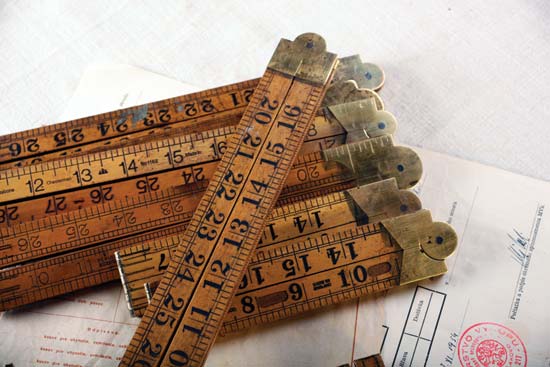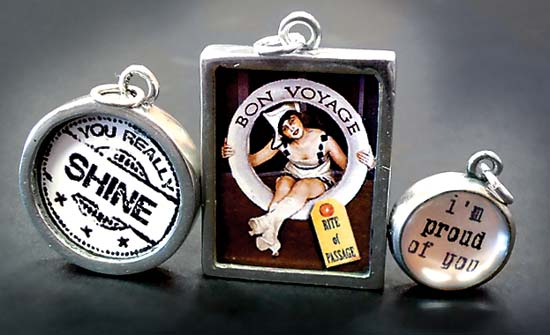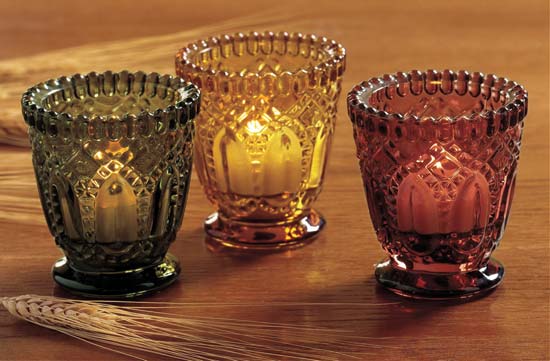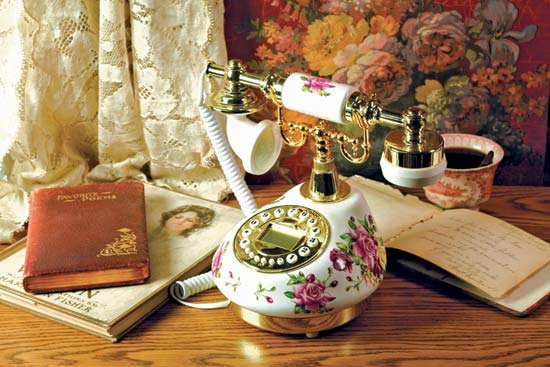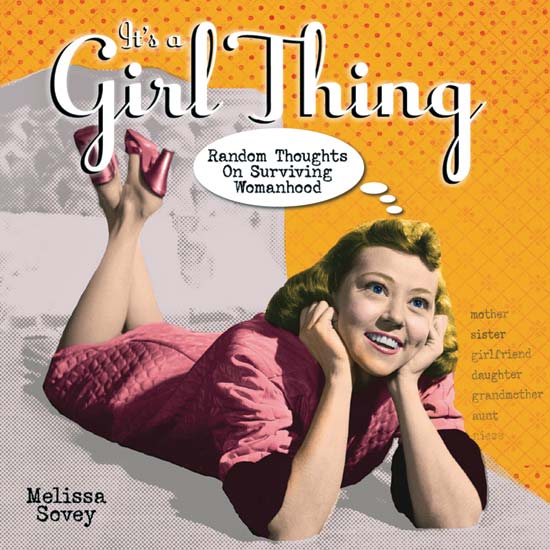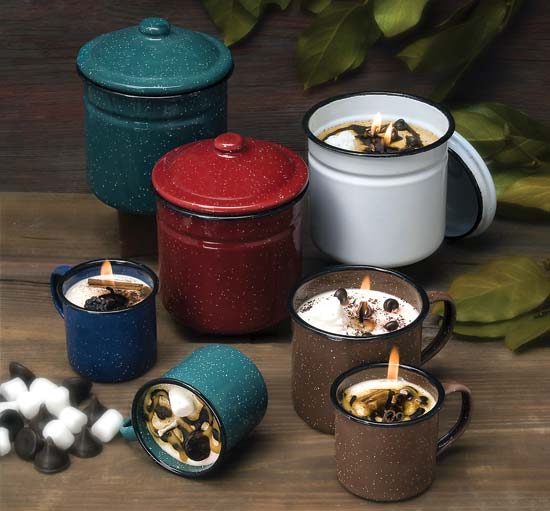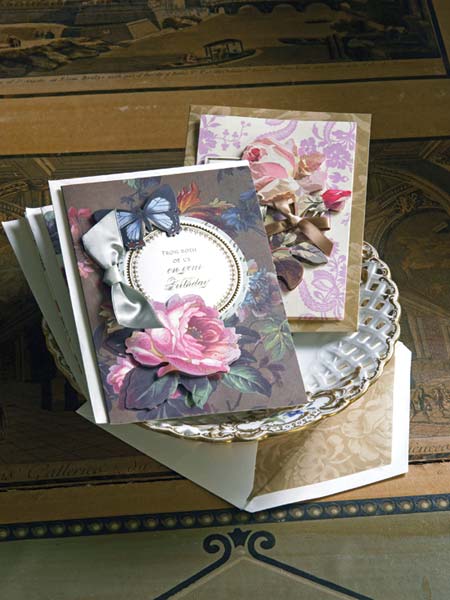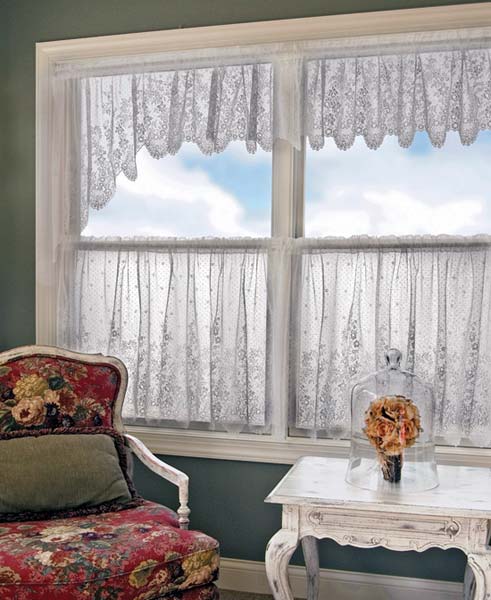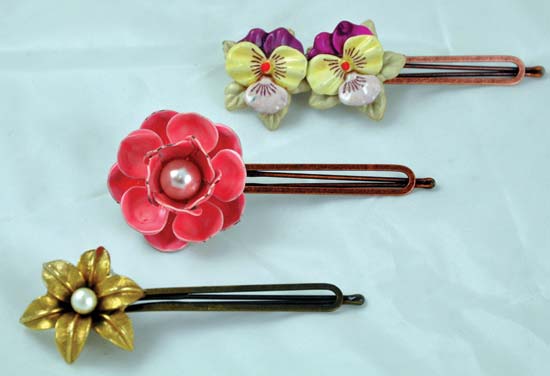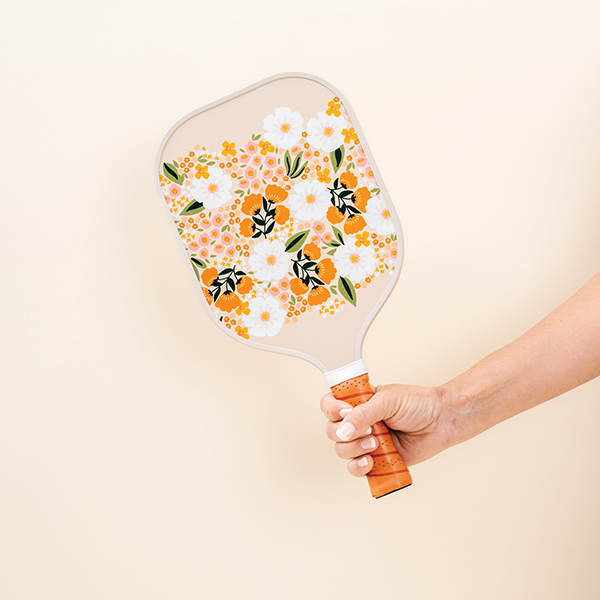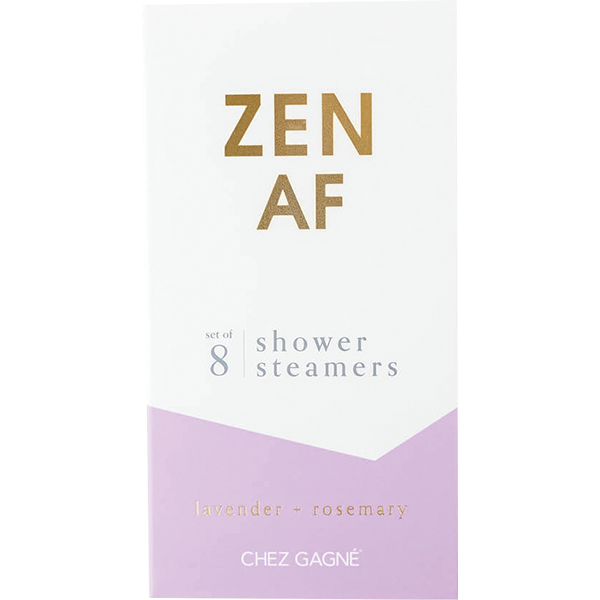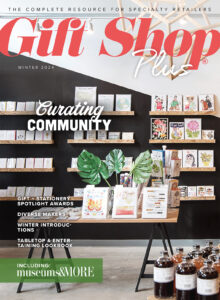A Rosy Future for Vintage
A yearning for simpler times. Nostalgia. Whatever the drivers for vintage goods are, there has never been a stronger indication that old is indeed gold!
Maybe it is a piece of jewelry that resembles something Grandma wore.
Or perhaps it’s a wall hanging with the logo of the neighborhood gas station. These are the vintage items that catch the customer’s eye because they create happy memories of a particular time or place or person.
What’s vintage?
 But what exactly is vintage? The answer isn’t alike for any two vendors or retailers who create and sell vintage gift products. Darrellene Lindsey of Darrellene Designs in Plano, TX, considers vintage to be something from the 19th or early 20th centuries that is turned into a piece of art. Darrellene Designs tries to rekindle memories with artwork inspired by vintage French cheese labels. Products include wall décor, lazy susans, chargers, and coasters.
But what exactly is vintage? The answer isn’t alike for any two vendors or retailers who create and sell vintage gift products. Darrellene Lindsey of Darrellene Designs in Plano, TX, considers vintage to be something from the 19th or early 20th centuries that is turned into a piece of art. Darrellene Designs tries to rekindle memories with artwork inspired by vintage French cheese labels. Products include wall décor, lazy susans, chargers, and coasters.
For Kerri Lee-Sensiba, owner of Tree by Kerri Lee in Long Eddy, NY, vintage includes products from as recently as the 1960s. Anything from the 1960s and earlier, she says, could be vintage.
Finally, Lynn Carney of Knobstoppers, based in Nashville, TN, dates vintage at a decade earlier, in the 1950s. Knobstoppers is part of a line that includes CAKE Vintage and CAKE Kitchen Papers. Knobstoppers, Carney explains, are crafted from vintage doorknobs and transformed into wine stoppers. CAKE Vintage also has several products that use vintage items, such as spindle candlesticks and candelabras made from old railings, wine racks made from vintage textile spools, and vintage silver plate flatware.
Is there then some overlap between retro and vintage? As Angela Ringo sees it, the term “retro” covers the styles and trends of the past 50 years. Ringo is the Interiors Editor for Stylesight, a global trends-forecasting company. “When hearing the term retro, I instantly think of Courreges fashions and kaleidoscopic Pucci prints from the 1960s, 1970s wallpaper prints, or Madonna’s streetwise styling of the 80s,” says Ringo. “In design, it brings to mind iconic pieces that define that specific generation. In essence, retro is vintage, but perhaps it’s closer to our current moment in time. Vintage, on the other hand, can encompass much older time periods.” Lee-Sensiba agrees, stating that she considers items that cover the 1970s-80s as retro.
Vintage’s varied looks
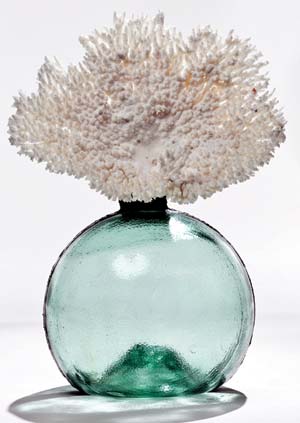 Vintage covers a wide range of products. “It’s really about authentic details and finishes that make items feel special,” Ringo says. “Elements like distressed finishes, aged metals, authentic hardware, and craft-oriented details like cross-stitching, needlework and hand-dyeing are things that consumers look for.”
Vintage covers a wide range of products. “It’s really about authentic details and finishes that make items feel special,” Ringo says. “Elements like distressed finishes, aged metals, authentic hardware, and craft-oriented details like cross-stitching, needlework and hand-dyeing are things that consumers look for.”
Susan Davis of Grandmother’s Buttons, a company that sells vintage jewelry, adds: “The vintage look really appears across the board: jewelry and clothing of course, but also bath and body lines, candles, kitchenware and decorative accessories. Our favorite vintage pieces are those that incorporate actual vintage elements, like buttons in jewelry, men’s shirts recycled into scarves, old linen feed bags into pillows, etc.”
Hope Milner, owner of ReFashioned in Pointe Claire, Quebec, uses old buttons and other recycled materials for her gift products. She first started her product line with button rings, fashioned from vintage buttons, and then expanded the line to include bracelets, earrings, and other pieces of jewelry. She has moved on to other items, like small plastic building blocks and bubble gum dispenser prizes to make jewelry and vinyl records that are reshaped into bowls.
It is important to remember that among the variety of products offered by wholesalers, there are vintage products (new products created from the old) and products with the vintage look—new products made to look like vintage ones.
Old is gold
 Even if, as the examples above show, there are different ideas of what defines vintage, the reasons for the category’s popularity poll pretty uniformly throughout. Customers these days yearn for simpler times. “Often when times are hard, people revert to nostalgia for comfort,” Carney says.
Even if, as the examples above show, there are different ideas of what defines vintage, the reasons for the category’s popularity poll pretty uniformly throughout. Customers these days yearn for simpler times. “Often when times are hard, people revert to nostalgia for comfort,” Carney says.
Nostalgia is a powerful driver. Perhaps not surprisingly, Milner of ReFashioned, finds that most of her gift items are popular among Baby Boomers. The materials she uses are things that her customers have grown up with. “I take things that were once loved to turn into new pieces,” she says. “These are items that are part of the memory.”
That emotional bond is what Lori Bonn, based in Oakland, CA, strives for. As company representative Debbie Glasband points out, the jewelry has the technique and handwork of vintage but the feel of modern. One of the company’s most popular products are Bonn Bons, slide charms that are inspired by jewelry from the Victorian era.
Carney also believes that financially trying times make people think twice about purchases and they often want to buy something that will keep jobs in the community and in the United States.
Lots of trends cycle through the ages and have the “what’s old is new again” vibe. Those who buy vintage, however, are often looking for something much deeper and more meaningful. “I think with cyberspace really taking over our consciousness, we romanticize a time that felt more physically connected,” says Albert Tanquero, co-owner of Chicago-based The FOUND. The FOUND is a card and gift company whose products are inspired by a collection of found ephemera—everything from vintage photos, 35-mm slides and mug shots to letters and original decals.
“I think in the last 10 years with the rise of iPods, computers, smart phones, and iPads, our lives have gotten overly complicated and fussy,” Tanquero says. “Looking back at the past we see that things could be more simple.”
Value in vintage
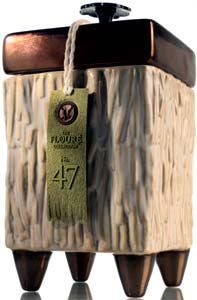 Nostalgia and a yearning for simpler times are not the only reasons that explain the popularity of vintage. “Customers have a desire to return to items that are made to last and have unique qualities,” Ringo says. Even items that are designed to look and feel like vintage can carry these qualities, as long as the details are genuine.”
Nostalgia and a yearning for simpler times are not the only reasons that explain the popularity of vintage. “Customers have a desire to return to items that are made to last and have unique qualities,” Ringo says. Even items that are designed to look and feel like vintage can carry these qualities, as long as the details are genuine.”
And it appears that consumers are willing to pay the price for this higher quality—and for the uniqueness of the product. “You’d think that our best-selling items would be our least expensive, especially in this economy. But actually both our lowest priced and highest priced pieces comprise our best-seller list,” says Davis of Grandmother’s Buttons. “It’s easy to see why our $20 retail beaded earrings sell—price and appealing design. But our $95 antique/vintage button bracelets and necklaces? They sell because the customer perceives them as a treasure that they absolutely have to have, a one-of-a-kind piece that they’ll never see again. They love the authenticity of the buttons, the idea that many of the buttons were on women’s gowns 100 years ago. Many customers we find are yearning to buy things that have the intrinsic value of being handmade or created with something from the past.”
Appeal across demographics
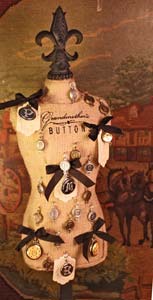 Even if the FOUND uses vintage ephemera as inspiration, Tanquero realizes that the products have to have a contemporary sensibility to appeal to today’s shopper. These shoppers embrace a wide spectrum when it comes to vintage.
Even if the FOUND uses vintage ephemera as inspiration, Tanquero realizes that the products have to have a contemporary sensibility to appeal to today’s shopper. These shoppers embrace a wide spectrum when it comes to vintage.
Lindsey of Darrellene Designs thinks that vintage sells well to all demographics—for older folks the items take them back to their youth, while for younger people, vintage gives them a glimpse of the way things once were. Chef Chris Green has seen this play out at The Spotted Crocodile in Grayslake, IL. The antique-inspired jewelry and housewares the store sells, appeal to a younger market. But items like a watch with an old-fashioned phone cord or a clock that uses a vinyl record for the face tend to appeal to more mature customers, those who have first-hand memories of the materials.
The items from Grandmother’s Buttons, which is based in St. Francisville, LA, and other vintage items would be a good fit for gift shops that cater to younger people, says Davis. “Anyone dealing with a younger demographic should think very seriously about carrying vintage products that can also be considered green, repurposed or fair trade,” she advises. “Our experience with younger buyers is that they have truly incorporated an ethic for more careful consumption and are strongly drawn to products made by American cottage industries that repurpose or, if made internationally, use fair trade practices.”
Carley Seale of the Gypsy Wagon in Dallas, TX, agrees. While the majority of her customers are older women, equally interesting is the fact that young women between 20-30 years of age love the vintage category. “The young gals are a fun group of buyers, who don’t want the same things their friends have, who appreciate being unique, and who are idealistically against mass-production,” Seale says.
The Alcea Collection in Middleton, MA, is popular among girls as young as 14, says owner Lisa Rosenthal. Shoppers find vintage sterling silver jewelry and other accessories at the store. “The high school-aged girls love the vintage look since it is now recognized as an up-and-coming trend. We also get a lot of older women in here who tend to love the vintage gemstone pieces and the sterling bracelets,” Rosenthal says.
Selling vintage
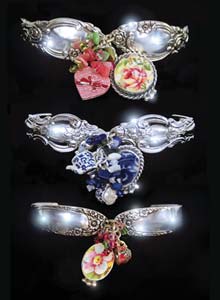 To sell vintage, make sure your displays have a holistic look—in other words, don’t use trendy, contemporary-looking furniture to showcase vintage products. Carley Seale follows this advice well. She displays the store’s vintage items with flea market finds. Baby gifts, for example, are displayed in an old hardware store fixture. Even the curtains on the dressing rooms are 1940’s bark cloth.
To sell vintage, make sure your displays have a holistic look—in other words, don’t use trendy, contemporary-looking furniture to showcase vintage products. Carley Seale follows this advice well. She displays the store’s vintage items with flea market finds. Baby gifts, for example, are displayed in an old hardware store fixture. Even the curtains on the dressing rooms are 1940’s bark cloth.
At the Alcea Collection, jewelry is displayed openly in the store, with the layout similar to that of an outlet store or flea market kind of display. The environment is set to be very relaxed, Rosenthal says. “Customers are welcome to have a complimentary cup of coffee, tea or hot chocolate while they browse around the store.”
This focus on the customer, particularly the customer’s emotional base, is the best way to build a relationship, says Bob Negen, president of WhizBang! Training, a retail-consulting firm in Grand Haven, MI. This is especially true when selling vintage gift items, which often depend on an emotional attachment to a product or to the era the product represents.
And, from the looks of it, that attachment is here to last. After all, as Lynn Carney says: “Vintage is hip! The young find discovering old things fascinating and the older [folks] find revisiting their past and seeing interest in it again, refreshing. Plus, with the environmental movement gaining momentum, buying vintage is also a way to make sure you aren’t adding one more thing to the landfill.”
Mouse over images below to view.
